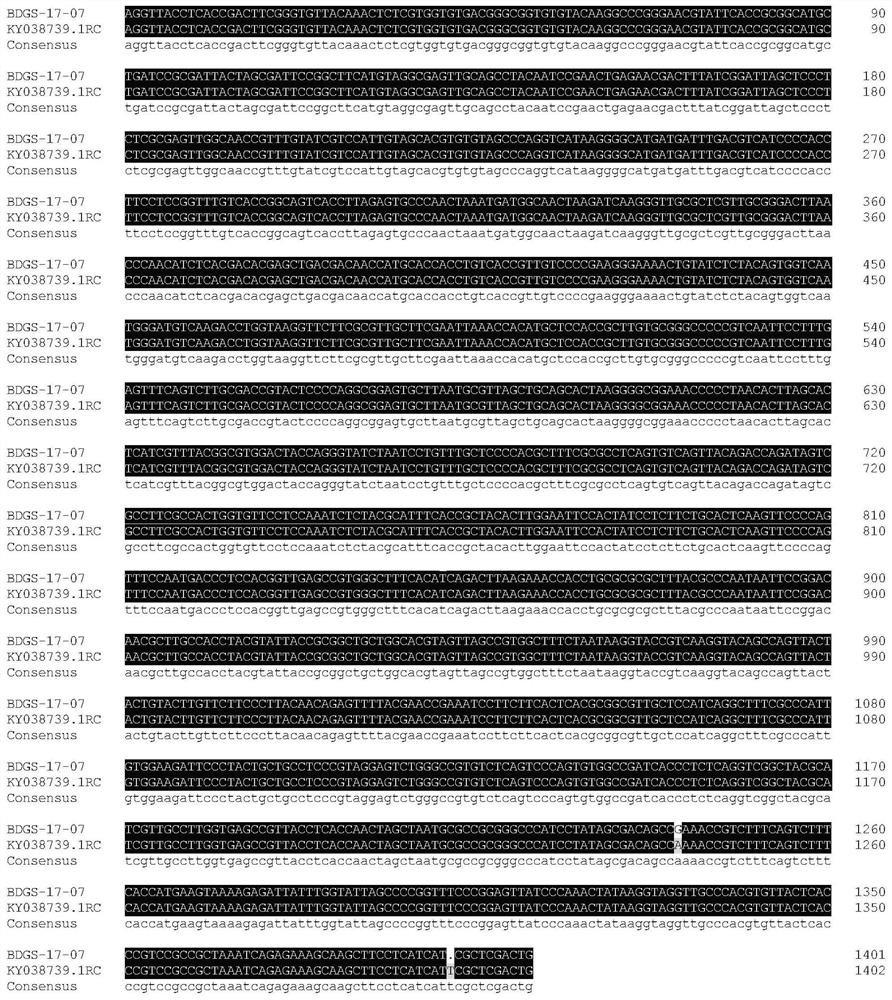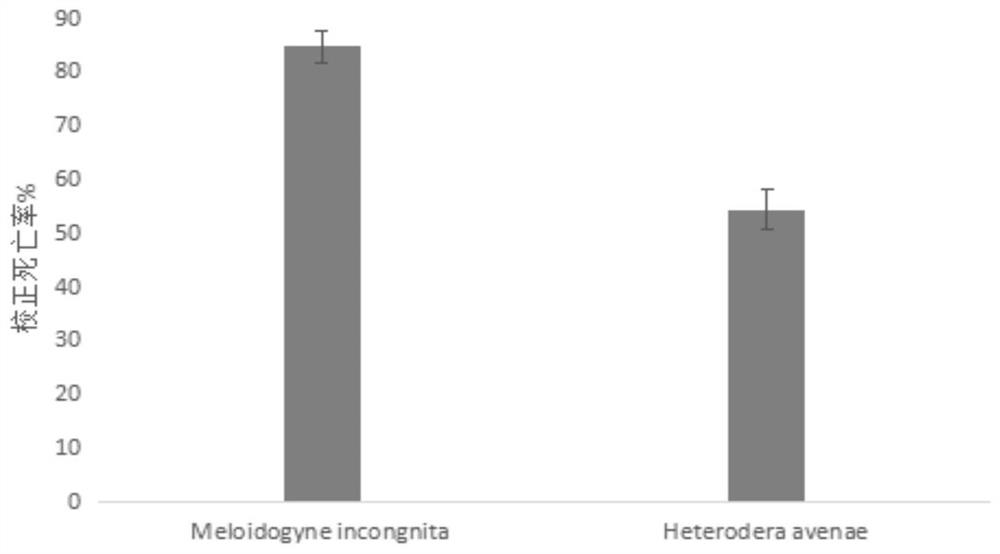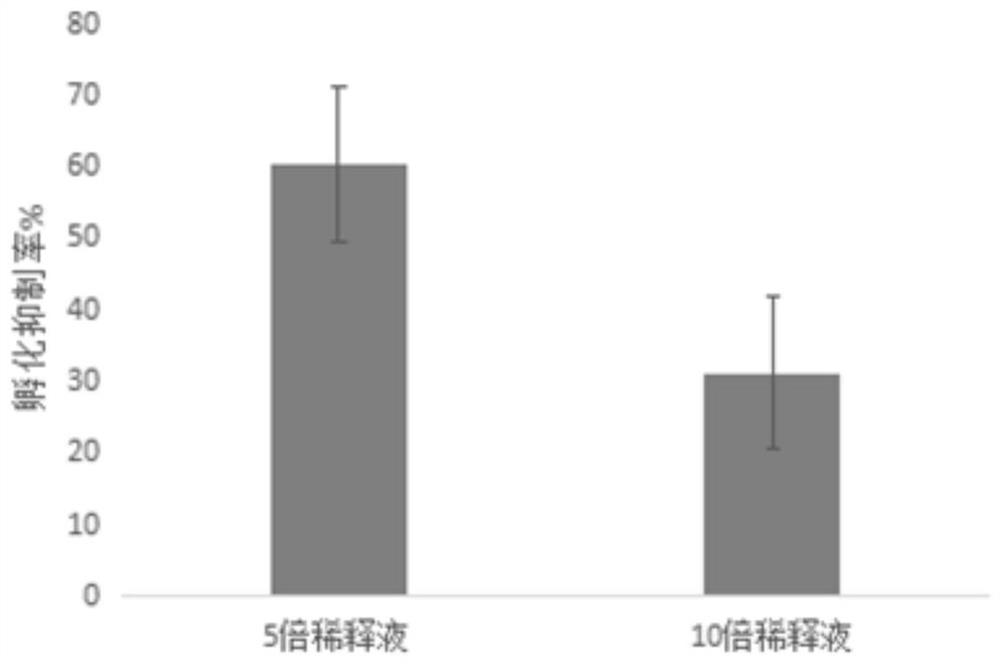A strain of Bacillus lysinus for preventing and controlling plant nematodes and its application
A Bacillus lysine, plant technology, applied in the application, nematicides, plant growth regulators and other directions, can solve serious pollution, damage to the environment, high residues and other problems
- Summary
- Abstract
- Description
- Claims
- Application Information
AI Technical Summary
Problems solved by technology
Method used
Image
Examples
Embodiment 1
[0043] Example 1, Isolation, Purification and Identification of BDGS-17-07 Bacterial Strain
[0044] 1. Isolation and purification of BDGS-17-07 strain
[0045] Strain BDGS-17-07 was isolated from the soil of Bagagong Mountain in Zhangjiajie, Hunan Province. The specific steps are as follows: Weigh 5g of soil sample, add it into a conical flask filled with 45mL of sterile water, shake and cultivate the conical flask for 30min in a shaker with a rotating speed of 200rpm / min, and prepare 10 -1 soil dilution. Step-by-step dilutions were carried out in an ultra-clean workbench to prepare a series of soil dilutions with corresponding gradients. Use a pipette gun to draw an appropriate amount of soil dilution on the LB plate, and then spread it evenly with a spreader, and repeat each concentration 3 times. Place it in a constant temperature incubator at 28°C for 24 hours, observe the growth of the colony on the plate, pick a single colony on the plate, name it BDGS-17-07 strain, ...
Embodiment 2
[0054] The preparation of embodiment 2, BDGS-17-07 bacterial agent
[0055] 1. Culture of plate strains
[0056] The BDGS-17-07 strain isolated in Example 1 was inoculated on an LB solid medium plate, cultured at 28°C for 24 hours, and a single colony was picked to obtain a plate strain.
[0057] 2. Liquid fermentation culture
[0058] Inoculate the plate bacteria obtained in step 1 into a 250mL Erlenmeyer flask containing 100mL of fermentation medium, and ferment and culture at 200r / min shaker speed for 60h at 28°C to obtain BDGS-17-07 and its metabolites. The fermented liquid is named BDGS-17-07 bacterial agent.
Embodiment 3
[0059] Embodiment 3, the application of BDGS-17-07 bacterial agent in the prevention and treatment of plant parasitic nematodes
[0060] 1. Nematicidal activity test of BDGS-17-07 bacterial agent on second instar larvae of plant parasitic nematodes
[0061] 1. Obtaining the second instar larvae of the root-knot nematode Meloidogyne incognita
[0062] Take water spinach roots inoculated with second instar larvae of Meloidogyne incognita for 60-90 days, clean the root soil with tap water, pick mature and plump egg masses with tweezers under a magnifying glass and place them in the hatching sieve, and place the hatching sieve containing a large number of egg masses Place in a petri dish, add distilled water to the petri dish until the eggs are slightly submerged, and hatch in a constant temperature incubator at 25°C. In order to ensure the complete rate of hatched nematodes, the second instar larvae hatched on the first day are discarded; The activity of the second-instar larvae...
PUM
 Login to View More
Login to View More Abstract
Description
Claims
Application Information
 Login to View More
Login to View More - R&D
- Intellectual Property
- Life Sciences
- Materials
- Tech Scout
- Unparalleled Data Quality
- Higher Quality Content
- 60% Fewer Hallucinations
Browse by: Latest US Patents, China's latest patents, Technical Efficacy Thesaurus, Application Domain, Technology Topic, Popular Technical Reports.
© 2025 PatSnap. All rights reserved.Legal|Privacy policy|Modern Slavery Act Transparency Statement|Sitemap|About US| Contact US: help@patsnap.com



